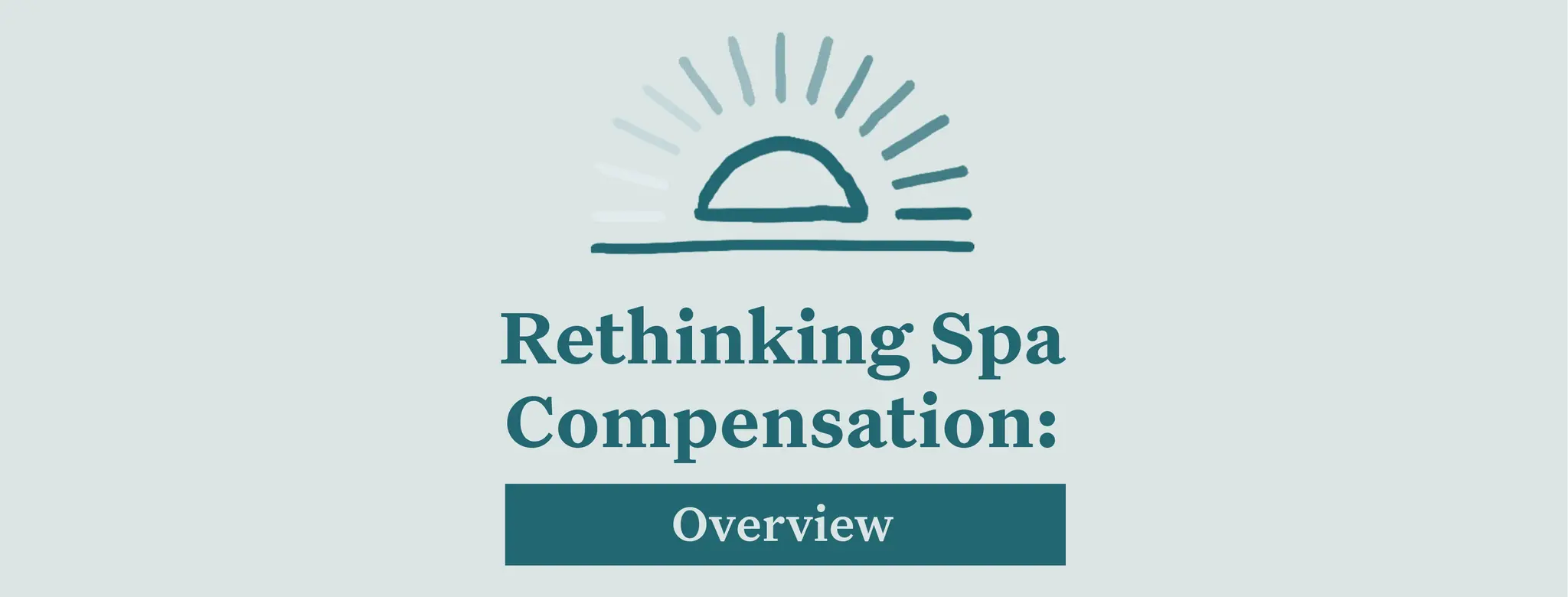
Spa Employee Compensation Plans—How Did We Get Here?
As spas look to reopen, they need to take a hard look at their costs. After all, with fewer clients able to come in at a time, it's difficult to achieve the same utilization rates and revenue seen pre-COVID-19. Spa owners know that employee payroll is the largest cost of doing business and may look to revise the pay structure (including salaries and any incentives in place) to ensure they can stay profitable and in business, ensuring jobs in the long term. Employers must balance profitability and employee retention to create win-win scenarios for both parties.
In a series of posts, we’re diving deeper into each of these aspects of spa and wellness center employee compensation (including support staff hourly wages and retail commission, service provider pay and incentive strategies, and the salaries and bonuses appropriate for spa directors and spa owners), bringing you some ideas and inspiration for how to structure your spa compensation plans to deliver optimal results for both your staff members and the business.
There is good news and bad news about the current compensation plans in spas and wellness centers in the United States. The good news is, with 50 sets of state regulations on minimum wage, and entrenched practices that have been followed regionally for many years, America has an extremely wide range of staff compensation strategies in use. The bad news is, without a consistent approach, prospective employees never know what to expect, potential business owners don’t know how to plan and forecast, and too few of these plans keep compensation costs under control.
A brief history of spa compensation plans
When salons began to morph into spas, or at least to add facials and massages to their service menus in the mid-’80s, owners opted to pay these new service providers the same way they had always paid their salon staff, in the absence of other models. At that time, US salon employees were generally paid straight commission on services (commission-only), without any guarantees or hourly rates. However, the commission percentages were quite high; in parts of the country, 50% was standard, and some areas went even higher.
When the demand began to grow for spa services in salons, businesses often reacted by just adding one or two rooms to offer skin and body services. While appropriately equipped and furnished, these were only a treatment room door away from the hustle and bustle of the salon. As these new treatments grew in popularity, it became clear that these types of services benefited from separation from beauty departments. The facilities became larger, sometimes even with separate check-in desks for salon and spa services. With the focus on the client experience, other features were added including relaxation lounges, self-help refreshment bars, locker rooms, changing rooms, and sometimes even wet amenities like steam rooms or saunas.
Keeping up with spa consumer expectations
The media coverage of spas became more consistent, both in print and broadcast media. At the same time, travelers and business-people began to enjoy spa experiences in locales other than their home. Consequently, clients began to expect an elevated experience, including donning a luxurious robe and relaxing in a well-appointed environment, even when visiting their local day spa.
But all of these amenities cost vastly more to deliver, at least in terms of the physical plant, than a haircut or manicure. There was no way to forecast, at the time, the impact of these miscalculations on profit potential in the future. Add to this increasing everyday business costs, as well as additional expenses of maintaining a social media presence and the other digital aspects of managing a business today, and you have the unenviable combination of business costs of 2020 with, in some instances, an operations finance model from 1995.
Spa employee compensation and your bottom line
Certainly, costs have increased in every aspect of operating a business. So why focus on the compensation factor? Regardless of location and type of spa, in the United States, the cost of labor is the highest single aspect on the income statement. In an industry with narrow margins to begin with, saving even a few percentage points in cost of goods and associated labor expenses can have a very positive impact on your bottom line.
Beyond the financial impact, the broader implications of some of these legacy compensation practices, especially regarding service providers, is that they are not necessarily oriented to long-term growth. Plans that reward the providers individually, without a team or business impact, have not been shown to grow sales or other important performance metrics for the business.
Additionally, compensation for support staff, aside from in the hotel/resort model, is often not tied to sales metrics, and yet these are the staff members who are the first and last point of contact for the guest and can greatly impact the overall satisfaction of the visit. Now we add to the mix the evolution of the spa industry into additional wellness modalities, which may bring practitioners with yet another pay model, or no practitioner at all, and you have a recipe for confusion!
It's time to abandon the payroll of 1995 and put in place a pay structure that's reflective of your costs and business today. Stay tuned for our blog post on how to appropriately pay the employees who support your spa business (and can be instrumental in selling retail—should you incentivize properly).


